GRADAŠKA公寓式住宅
2017-12-27斯洛文尼亚卢布尔雅那
斯洛文尼亚卢布尔雅那
GRADAŠKA公寓式住宅
Apartment House Gradaška Ljubljana, Slovenia
斯洛文尼亚卢布尔雅那
Gradaška公寓式住宅是一幢独立式建筑,内设12间高规格可供任何类型租户租住的公寓。Gradaška公寓式住宅位于一片城市居住区边缘,居住区内为四层高的公寓楼。正后方是风格迥异的小型乡村式住宅区,位于两者之间的GRADAŠKA公寓式住宅楼正好避免了该处乡村风格与城市风格住宅生硬的过渡。由于Gradaška住宅楼坐落在低矮乡村住宅区的保护范围,因而,卢布尔雅那城堡和市中心的美景一览无遗。
Gradaška住宅内的12间公寓风格各异,足以满足各类住户的需求。每间公寓首先单独进行分块设计,再堆叠成一幢紧凑型建筑,犹如12块巨大的俄罗斯方块。每间公寓都设有一层半或双层通高客厅,使其各具特色,并且充分保证室内空间在垂直方向上的视野。每间公寓均设有廊,以便住户观察楼下生活区的情况。每间公寓在设计时保证至少有两个朝向,以便住户能够观看到城市或周边景观的全景。尽管该建筑并未设计花园或阳台等外部缓冲地带,但每间公寓的立面可以完全打开,室内空间也因此变成了室外空间的延伸,而客厅则变为城市阳台,通过看似矛盾的手法拉近了私人空间和公共空间的距离。通过这种矛盾创造出都市生活,Gradaška住宅为住户提供了一种让人联想到居住在城市郊区住宅的生活方式,即居住在一间拥有大型私人花园的住宅内。通过这种方式,整个城市成为了居住者的私人花园。建筑的四个立面使用三种不同的材料制成:薄金属格栅、砾岩和反射性透明玻璃。砾岩用于勾勒每间公寓的轮廓,而玻璃则用于反射周边景观,避免其映入公寓内部以及公寓内部的隐私向外界泄露。不锈钢遮光板既能使公寓内的光线形成漫反射,又可避免外部光线直射入公寓内。由于采用反射玻璃立面,建筑的外观会经常变幻。白天,建筑是内敛的,但夜间,建筑是外向的,它褪下外表神秘的面纱。公寓与城市、私人与公共间的界线开始消失,立面成为了可以切换的表面,在乡村与城市、私人与公共之间切换自如。立面是一件可以渗透的外衣,不仅仅让室内融入户外,还可以让建筑周边的环境渗入公寓的小环境内。室内看到户外的景色与每天回家时建筑立面上反射的景色相同,这同样能够增进住户对建筑的认同。
我们并未通过类似的外形、体积或材料使建筑物与当地的环境融为一体,而是通过色彩和伪装——在立面上反射周边景色实现这一目标。对Gradaška住宅的褒贬不一:当地居民对其庞大的外形以及是否能够融入周边环境表示忧虑,而外国游客认为这是一幢与当地建筑风格高度一致的建筑。对于我们而言,该项目提供了一种截然不同的对特定环境的认知方式。
The Apartment House Gradaška is a freestanding building with twelve high standards, open market apartments. The Apartment House Gradaška is located on an edge lot belonging to an urban residential block consisting of four-story apartment buildings. Situated directly behind it is a quite different neighborhood of small-scale houses of an almost rural character. Our building is thus a mediator in what is essentially a near collision of rural and urban scales. Situated on the periphery of a protected enclave of low housing units, the Gradaška House offers ample views of the Ljubljana Castle and city center.
The Gradaška House is comprised of twelve diverse fl ats that are adaptable enough to accommodate any type of inhabitant. Particular apartments were developed in sections and then stacked together into one compact building like twelve over sized Tetris blocks. Each apartment has a one and a half or double height living room, giving each of the units an individual character and enabling vertical views of the interior space. All of the apartments have a gallery allowing views of the living quarters below. Each fl at also has at least a double orientation and thus a panoramic view of the city or the surroundings.Although the building has no outside buffer spaces such as gardens or terraces, the facade of every apartment can be completely opened up. As such, the interior space becomes a surrogate for the exterior, and the living room becomes an urban terrace, which is a somewhat contradictory way,establishes a close relationship between the strictly private and the public. Using this contradiction as a »generator of urban living«, we designed a building located in the city that offers a lifestyle associated with dwellings located on the outskirts, suggesting a house with a large private garden.In this way, the whole city becomes the inhabitants' private garden. The building's four facades are made of three different materials: a thin metal filigree base; a conglomerate stone, which outlines the individual apartments, and a combination of reflective and transparent glass panels, which mirror the surroundings, prevent them from entering into the apartments, or reveal the interior of an apartment in the surroundings. The stainless steel shading elements either diff use the light in the apartment or prevent it from entering. The appearance of the building constantly changes because of the reflective glass facade. During the day the building is introverted, but during the night it unveils itself and opens to the surroundings. The border between the apartment and the city, between the individual and the public,starts to dissolve, and the facade becomes a switching surface, shifting between the rural and the urban and between the personal and the public. The facade is a permeable envelope that not only lets the interior extend to the exterior but also the context of the building into the microcosm of the apartments.This also facilitates the inhabitants' identification with the building in which they live, since the view they have toward the outside is the same one they see reflected on the facade as they approach their home.Rather than trying to contextualize the building through formal, volumetric, or material similarities to the area, we achieved this through the use of color and camouflaging by reflecting the immediate surroundings on the facade. Reactions to the Gradaška House have been diverse: whereas locals were concerned about its size and how it would work within the surrounding environment, foreign visitors see it as a highly contextual building. For us, the project is one that allows a specific environment to be seen in a new and di ff erent way.
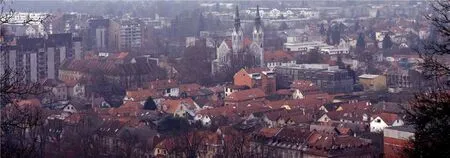
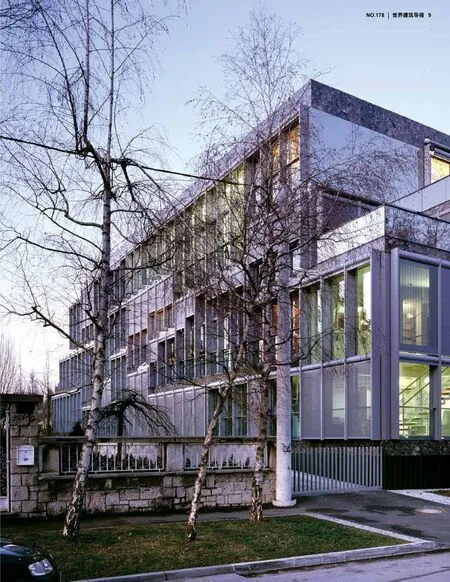



一层平面图 1st floor
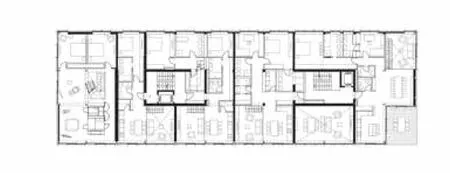
二层平面图 2nd floor
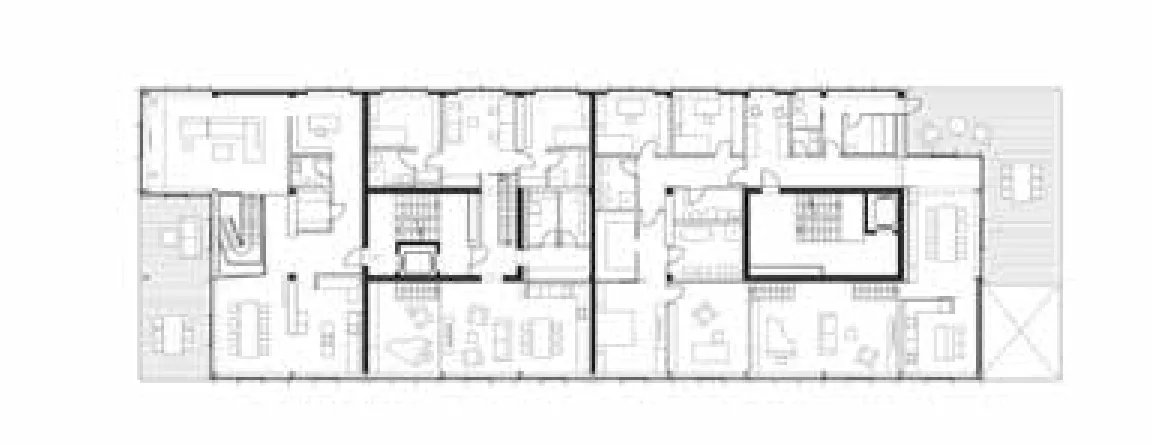
三层平面图 attic
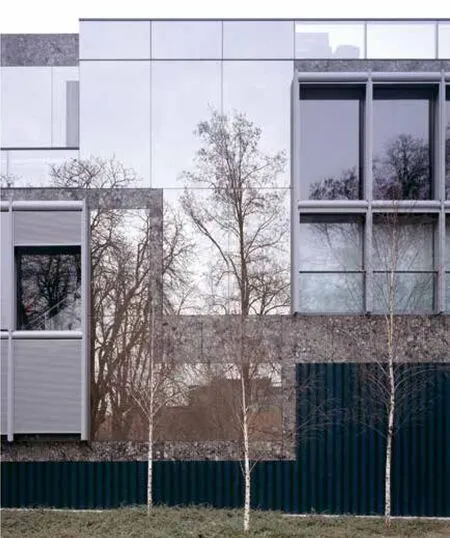
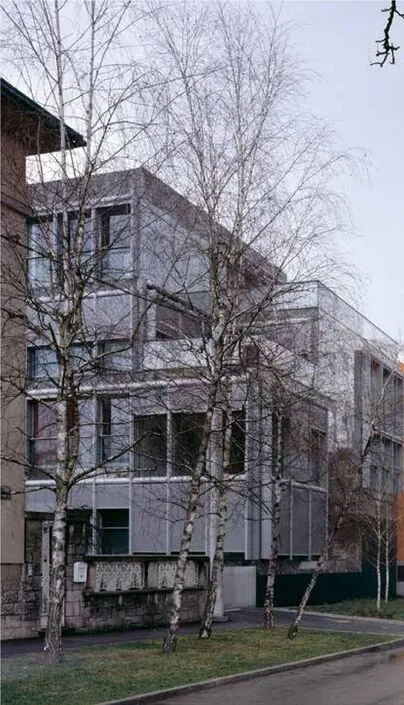


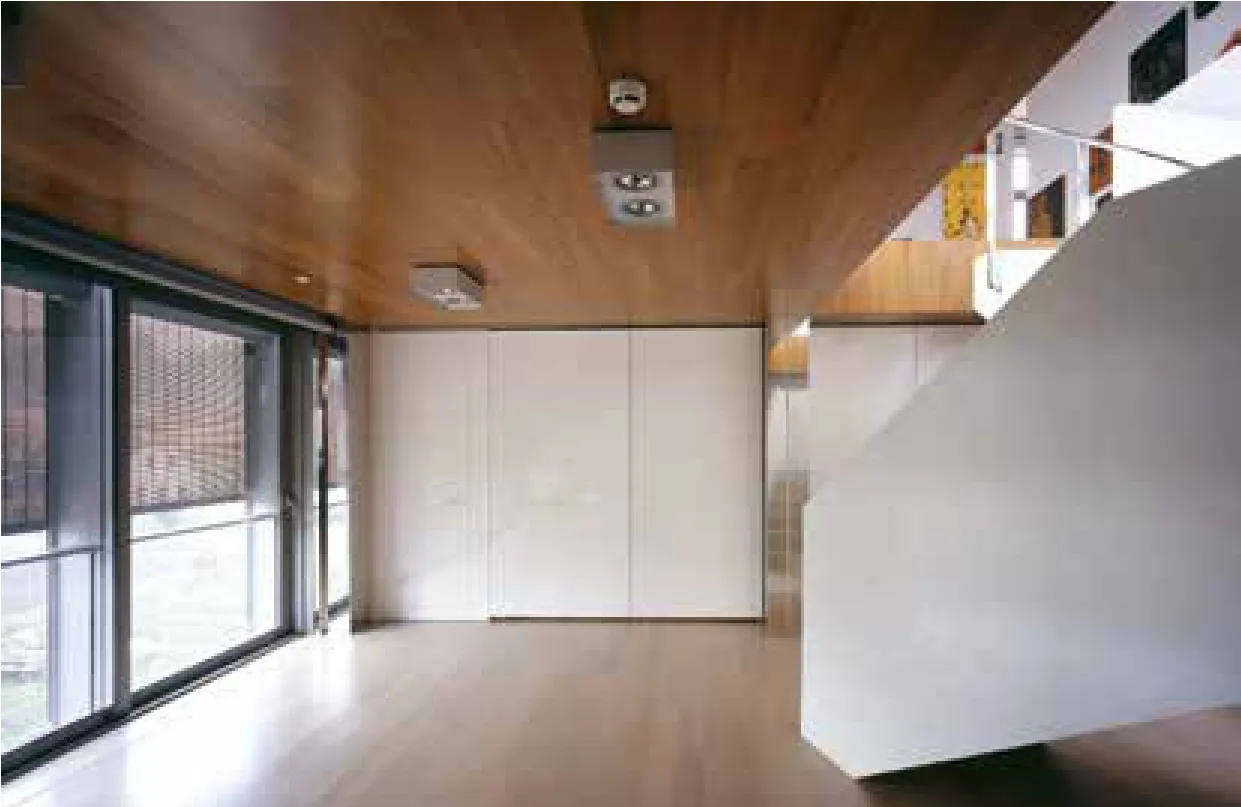

立面图 Facade

剖面图 Sections
